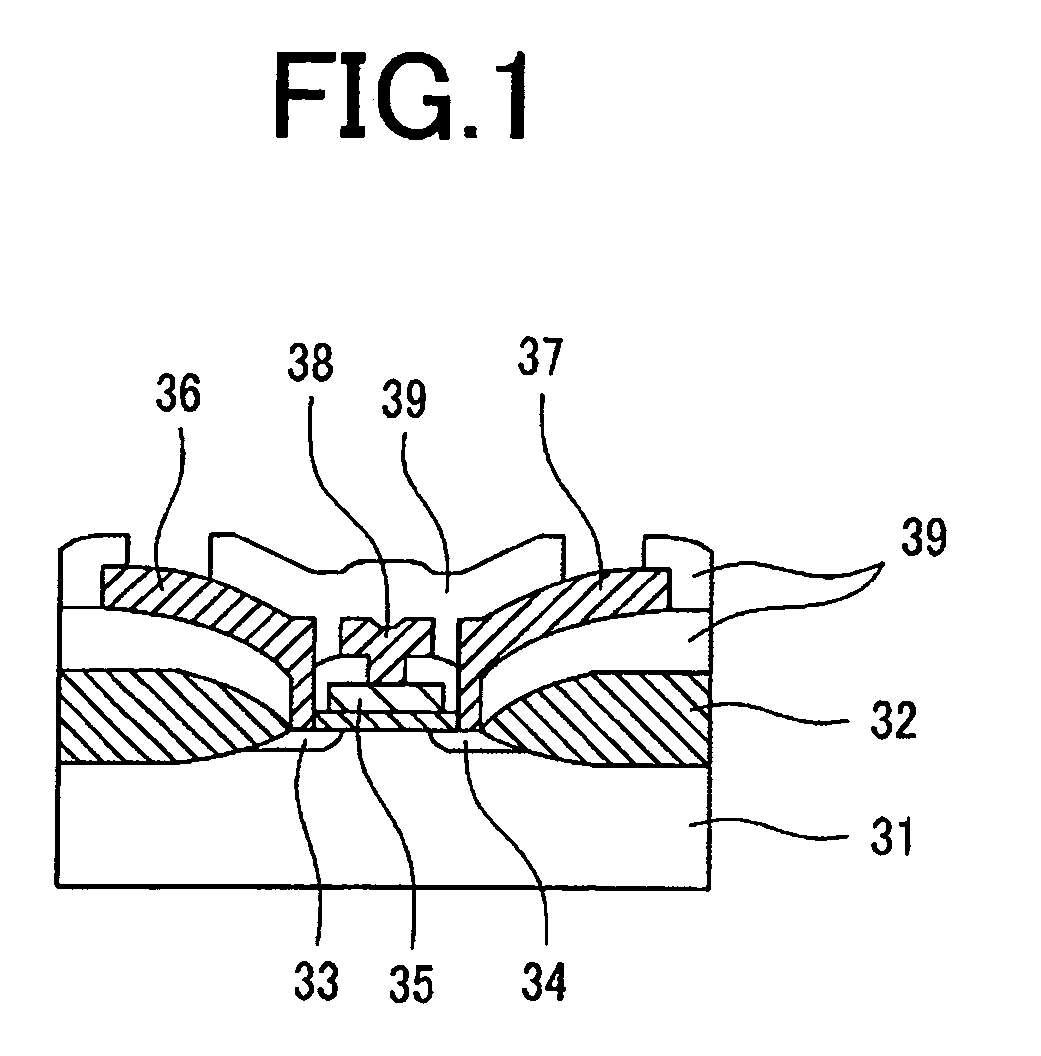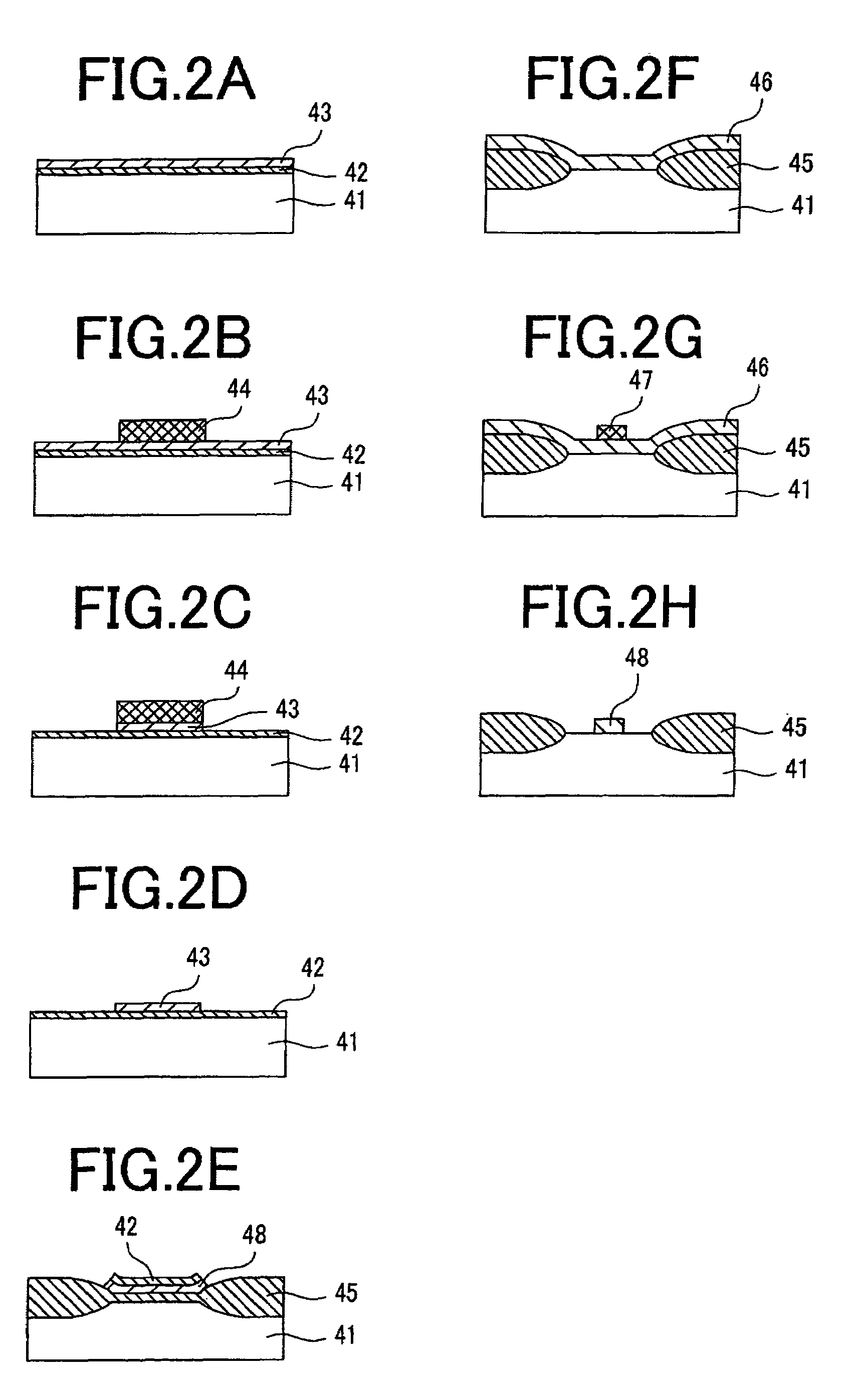Materials for photoresist, negative-tone photoresist composition, method of forming resist pattern, and semiconductor device
a technology of negative-tone photoresist and composition, which is applied in the direction of photosensitive materials, instruments, photomechanical equipment, etc., can solve the problems of high defect occurrence rate due to disadvantageous foreign materials, difficult to achieve required fabrication accuracy, and difficult to realize microfabrication. achieve the effect of low line edge roughness and high resolution
- Summary
- Abstract
- Description
- Claims
- Application Information
AI Technical Summary
Benefits of technology
Problems solved by technology
Method used
Image
Examples
embodiment 1
[0077]In this embodiment, a method of synthesizing photoresist compounds (A1, A2) according to the present invention is described.
[0078]Polyphenol compound 3M6C-MBSA (15 g) and potassium carbonate (7 g) were added to acetone (300 ml), and the mixture was sufficiently strirred. Then, acetone (50 ml) with α-bromo-γ-butyrolactone (6.0 g) was added to the above acetone (300 ml) with polyphenol compound 3M6C-MBSA (15 g) and potassium carbonate (7 g) at the room temperature. This mixed solution was strirred for two hours. After the reaction was completed, water (50 ml) was added to the mixture solution and acetone was removed by evapolation. THF (300 ml) was added, and an aqueous solution with 2.38% TMAH was added to the resultant solution with stirring until the pH was adjusted to about 11. After stirring continued for 2 hours at the room temperature, THF was removed by evapolation, ethyl acetate (200 ml) was added to the remaining solution, and then aqueous solution with 1% hydrochloric...
embodiment 2
[0083]This embodiment provides a method of synthesizing photoresist compounds (A5, A6) prepared by introducing δ-hydroxycarboxylic acid into 3M6C-MBSA.
[0084]Polyphenol compound 3M6C-MBSA (15 g) and potassium carbonate (7 g) were added to acetone (300 ml), and the resultant mixture was sufficiently strirred. Then, acetone (50 ml) with α-bromo-δ-valerolactone (6.0 g) was added at the room temperature, and the mixture solution was strirred for 2 hours. After the reaction was completed, water (50 ml) was added and the acetone was removed by evapolation. THF (300 ml) was added to the mixture solution, and then an aqueous solution with 2.38% TMAH was added with stirring until pH was adjusted to about 11. Stirring continued for 2 hours at the room temperature, THF was removed by evapolation, ethyl acetate (200 ml) was added, and an aqueous solution with 1% hydrochloric acid was added with heavy stirring until pH was adjusted to about 5. The organic layer was washed with water and a saturat...
embodiment 3
[0089]This embodiment provides a method of synthesizing a photoresist compound prepared by introducing γ- and δ-hydroxycarboxylic acids into a polyphenol compound other than the 3M6C-MBSA.
[0090]In the same synthesizing method as that described in Embodiment 1, a quantity of α-bromo-γ-butyrolactone added in a polyphenol as a feed was adjusted to an appropriate level by using the 25X-MBSA to obtain a photoresist compound (A9). In the photoresist compound (A9), the number of γ-hydroxycarboxylic acid introduced into the molecule was 1.2 on average.
[0091]Also the quantity was adjusted to an appropriate level by using α-bromo-δ-valerolactone in place of the α-bromo-γ-butyrolactone to obtain a photoresist compound (A10). In the photoresist compound (A10), the number of δ-hydroxycarboxylic acid introduced into the molecule was 1.1 on average.
PUM
| Property | Measurement | Unit |
|---|---|---|
| size | aaaaa | aaaaa |
| wavelength | aaaaa | aaaaa |
| wavelength | aaaaa | aaaaa |
Abstract
Description
Claims
Application Information
 Login to View More
Login to View More - R&D
- Intellectual Property
- Life Sciences
- Materials
- Tech Scout
- Unparalleled Data Quality
- Higher Quality Content
- 60% Fewer Hallucinations
Browse by: Latest US Patents, China's latest patents, Technical Efficacy Thesaurus, Application Domain, Technology Topic, Popular Technical Reports.
© 2025 PatSnap. All rights reserved.Legal|Privacy policy|Modern Slavery Act Transparency Statement|Sitemap|About US| Contact US: help@patsnap.com



